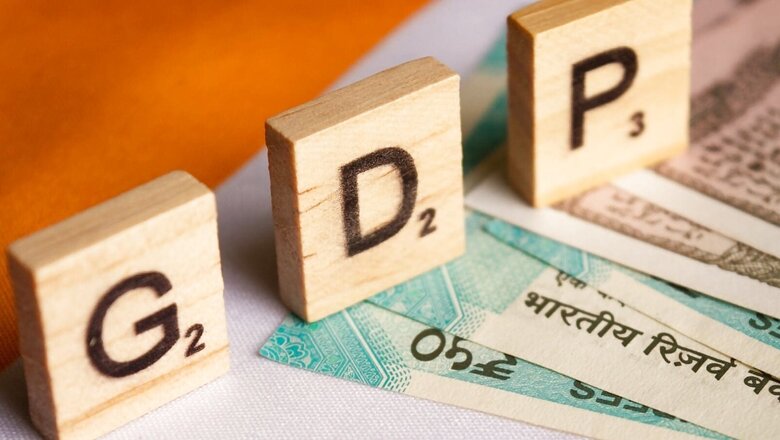
views
India’s strong economic growth rate and external balance sheet are expected to neutralise the risks inherent in the global environment, S&P Global Ratings said on Wednesday. It, however, added that the country is facing various factors that may shake its sovereign credit metrics.
In a credit FAQ titled ‘Can India Sovereign Ratings Withstand The Global Sputter’, S&P said that despite India’s strong external balance sheet, it has not been able to escape the difficult landscape the rest of its emerging market peers have faced over the course of the year and ‘more severe conditions’ could apply downward pressure on India’s sovereign credit ratings.
S&P has the lowest investment grade rating of ‘BBB-‘ on India with a stable outlook. “India is facing a mixture of factors that may shake its sovereign credit metrics. Amid external turbulence, its foreign exchange reserves are falling, and its current account deficit is rising. Meanwhile, the economy is battling faster inflation and tightening financial conditions both at home and globally,” S&P Global Ratings sovereign analyst Andrew Wood said.
S&P Global said India’s strong economic growth rate has long been an important counterbalance to its high fiscal deficits and debt burdens, and its sound external balance sheet helps to buffer against global market turbulence. “We expect these strengths to help neutralise the risks inherent in the treacherous global environment,” the US-based agency said.
Wood said, “Under more severe conditions though, a few factors could have the potential to apply downward pressure on our sovereign credit ratings on India.”
The rating agency forecasts Indian economic growth to slow to 7.3 per cent in the current fiscal, from 8.7 per cent last year. On Tuesday, the International Monetary Fund (IMF) also slashed its estimate for India’s GDP growth in the current financial year started April by 60 basis points to 6.8 per cent from a previously expected 7.4 per cent, on account of lower-than-expected growth in April-June and weak external demand. The figure for FY24 was left unchanged at 6.1 per cent.
S&P said a deeper global economic slowdown than currently anticipated could have an adverse impact on India’s economic performance in fiscals 2023 and 2024. Potential channels of risk for India include tighter global monetary conditions, prolonged high inflation, and poor investment or consumer sentiment both at home and abroad.
“In our view, India’s economy is unlikely to downshift for an extended time on this basis alone, especially given its predominantly domestic orientation. Still, in the event of a prolonged downturn in real and nominal GDP growth, material downward pressure on the sovereign ratings could emerge, especially if large government deficits are left unchecked,” Wood said. S&P forecasts India’s economic growth between 6.5-7.3 per cent through fiscal 2026.
Finance Minister on Tuesday also said pre-pandemic efforts included making the Indian economy robust with the infrastructure of not just roads but also digital infrastructure ready and financial inclusion, so that everybody has access to a bank account. All this came in handy during the COVID-19 pandemic.
India’s gross domestic product (GDP) rose 13.5 per cent in the June 2022 quarter (Q1FY23) as compared with the 20.1 per cent growth registered in Q1 2021-22. It was the fastest growth in a year, as the country’s GDP had grown at 4.1 per cent in the previous quarter (Q4FY22), 5.4 per cent in the December 2021 quarter of FY22, and 8.4 per cent in September 2021 quarter.
The fall in its foreign exchange reserves to around $533 billion currently, from a peak of about $634 billion in 2021, is driven in part by India’s growing current account deficit, it said as it forecast CAD to jump to 3 per cent of GDP in the current fiscal year, from 1.6 per cent of GDP in fiscal year ended March 2022, on surging import bill.
Read all the Latest Business News and Breaking News here


















Comments
0 comment